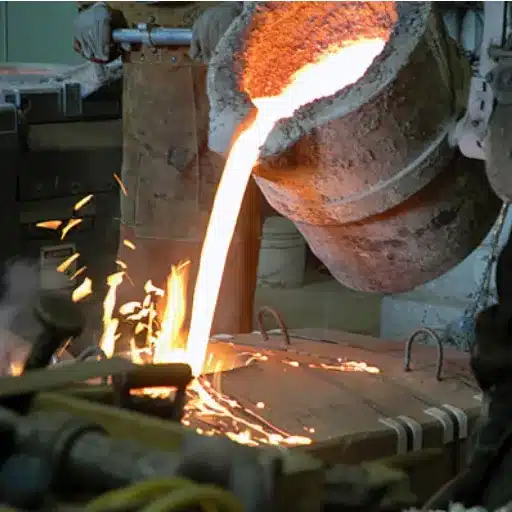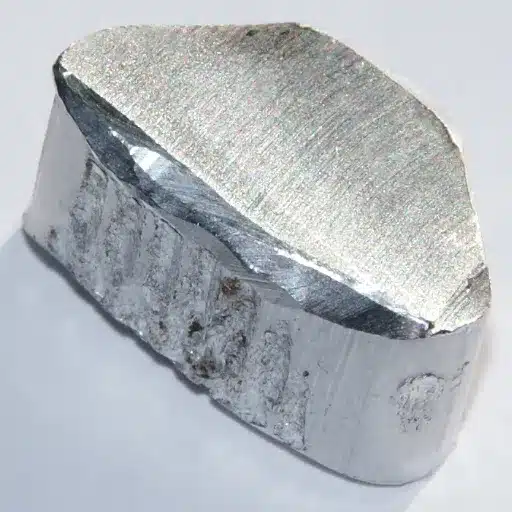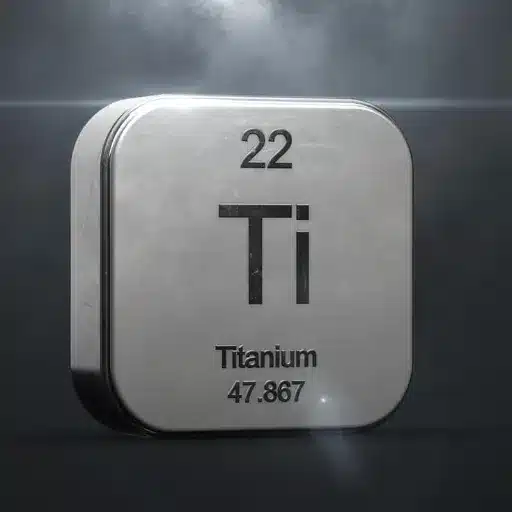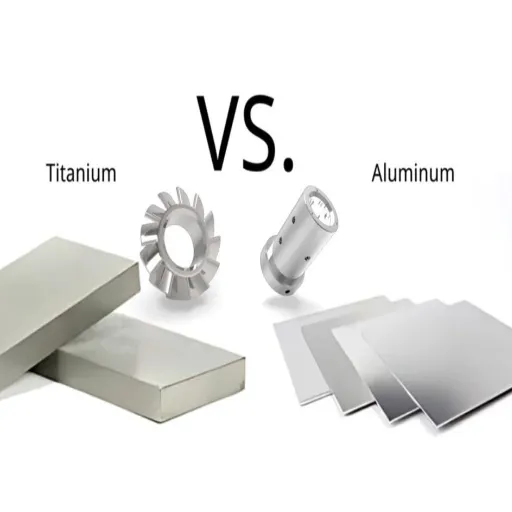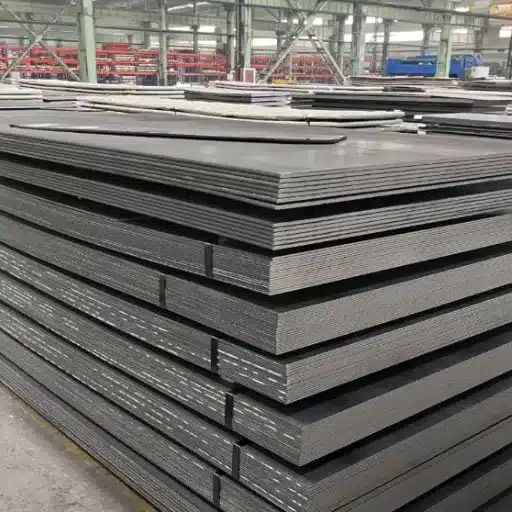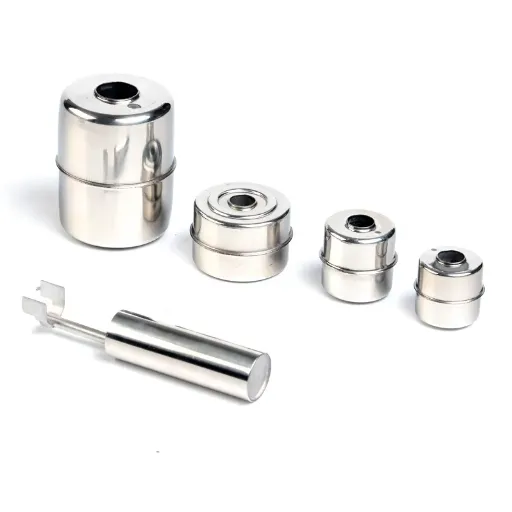Steel pipes are an area where it is very important to know the differences between Electric Resistance Welded (ERW) pipes and seamless steel pipes before choosing them for any application. These two types of pipes have an important place in the construction, oil and gas, and manufacturing industries, but they come from different manufacturing processes, each one having its own advantages.
This article is about the ERW pipes and their characteristics, and it compares them with the seamless steel pipes so that you can easily decide which one is better for your particular needs. The text is meant for professionals and non-professionals alike, and will provide you with the necessary information to make good choices.
Introduction to ERW Steel Pipe

ERW (Electric Resistance Welded) steel pipes are popular in different industries owing to their cost-effective nature and versatility. The manufacturing process involves rolling the metal and welding it along the length, which in turn produces very strong and durable pipe connections.
Key Benefits of ERW Steel Pipes:
- Uniform wall thickness – allows use in precision-required applications
- Lower weight – easier to transport and handle compared to seamless pipes
- Cost-effective – more economical manufacturing process
- Versatile – suitable for various industrial applications
ERW pipes have become a common choice in infrastructure projects, water conveyance systems, and non-critical pipelines, as they provide a dependable and effective solution for various needs.
What is ERW Pipe?
ERW (Electric Resistance Welded) pipes are made by taking steel, rolling it, and then using the electric resistance method to weld it together longitudinally along the length of the pipe. This technique guarantees a nice and even surface finish, thus ERW pipes are very much appropriate for operations needing exact measurements and constant strength of the structure.
ERW Definition:
Electric Resistance Welded (ERW) pipes are manufactured by rolling flat steel and welding the edges together using electrical resistance. This creates a longitudinal seam along the pipe length, resulting in a cost-effective and reliable product suitable for medium-pressure applications.
They are widely used in the construction, agriculture, and transportation industries and are famous for their low cost and flexibility. The gradual enhancement in manufacturing technology has been a key factor in the quality of ERW pipes that can compete in both low-pressure and non-critical bearing systems.
Importance of Understanding Pipe Types
Different kinds of pipes must be thoroughly understood for project success and safety. This is especially important in the construction, plumbing, and transportation sectors, among others. The choice of pipe type can affect the system directly in terms of life span, costs, and usability.
| Pipe Characteristic | Why It Matters | Common Concerns |
|---|---|---|
| Durability | Determines how long the pipe resists pressure and wear | Long-term performance, maintenance costs |
| Cost | Includes purchase price and lifecycle expenses | Budget constraints, total ownership cost |
| Corrosion Resistance | Affects pipe longevity in harsh environments | Chemical exposure, moisture, rust prevention |
Types of Steel Pipes
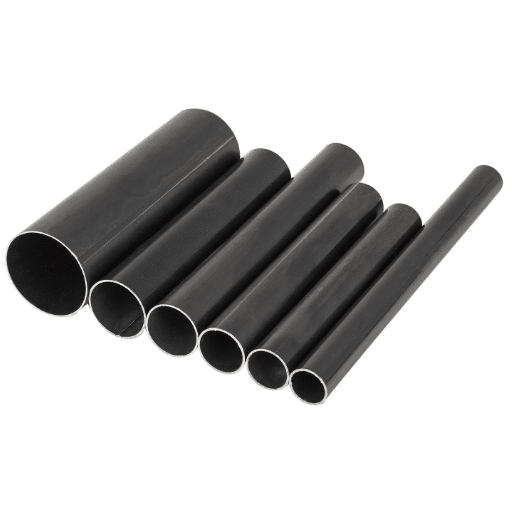
Carbon Steel Pipes
Carbon steel pipes are among the strongest and most durable pipes. They are normally applied in situations where high-pressure fluids and gases occur, because of the fact that they have the highest stress and temperature resistance.
Stainless Steel Pipes
The stainless steel pipes are the ones that can be used in the most demanding conditions, because their corrosion resistance property is extremely high. These pipes are mostly used in food, pharmaceuticals, and even marine applications.
Alloy Steel Pipes
Adding elements like chromes, manganese, and molybdenum are the reasons why alloy steel pipes have so many good attributes. Power and chemical plants are the main users of these pipes.
Galvanized Steel Pipes
Galvanized steel pipes are coated with zinc to avoid corrosion; thus, they are perfect for plumbing, water supply, and outdoor applications.
Seamless and Welded Steel Pipes
Seamless pipes are manufactured from a solid billet and hence possess no joints; this feature gives the pipes more strength and reliability. Welded pipes, in contrast, are produced by welding pieces of steel together, which makes them a cost-effective option for lower-pressure applications.
Welded vs Seamless Pipe
The decision on whether to go with welded or seamless steel pipes depends on the application and project requirements to a great extent.
🔧 Welded Pipes (ERW)
- More economical option
- Suitable for less demanding applications
- Used in structural work, water pumps
- Cost-effective for moderate pressure
- Modern manufacturing ensures reliability
⚙️ Seamless Pipes
- No joints or weak points
- High pressure and temperature capable
- Used in oil & gas, power generation
- Superior strength and uniformity
- Withstands harsh conditions
The decision to make ultimately should be between welded and seamless pipes factors taken into consideration operational conditions, budget limits, and project requirements, thus material selection is done where its best performance is assured.
Characteristics of ERW Steel Pipe
Electric Resistance Welded (ERW) steel pipes are recognized for their long life, low cost, and flexibility of use. Thus, they have become very common in various sectors.
Key Characteristics:
- Smooth surface finishes – enhances flow and aesthetic appeal
- Consistent wall thickness – ensures structural reliability
- High dimensional accuracy – precise measurements for fitting
- Lightweight construction – easier handling and installation
- Excellent corrosion resistance – when properly coated or treated
According to the latest data, ERW steel pipes are widely used for carrying water and gas, in oil pipelines, and for construction purposes. They are the first choice in precision and cost-sensitive industries because they have a lower price than seamless pipes while at the same time possessing good strength and stability.
Overview of Seamless Steel Pipe
Seamless steel pipes are made from solid steel billets, which are heated and shaped into a hollow cylinder, resulting in a pipe that is uniformly strong and devoid of seams throughout its body. This production method allows the pipes to bear higher pressure and stress than welded pipes, making them suitable for some of the most demanding industrial applications.
Why Choose Seamless Pipes?
- Superior strength – no weak points from welded seams
- High-pressure capability – withstands extreme conditions
- Uniform structure – consistent throughout the pipe body
- Critical applications – where safety is paramount
- Long-lasting quality – excellent durability and reliability
Thus, seamless steel pipes are widely used in industries like oil and gas exploration, power generation, and chemical processing, which require excellent strength and reliability. Even though seamless pipes are costlier than the electrical resistance welded ones, they are still the most sought-after option due to their high performance, especially when transporting hazardous materials or in situations where high temperatures and pressures are involved.
The ERW Process Explained
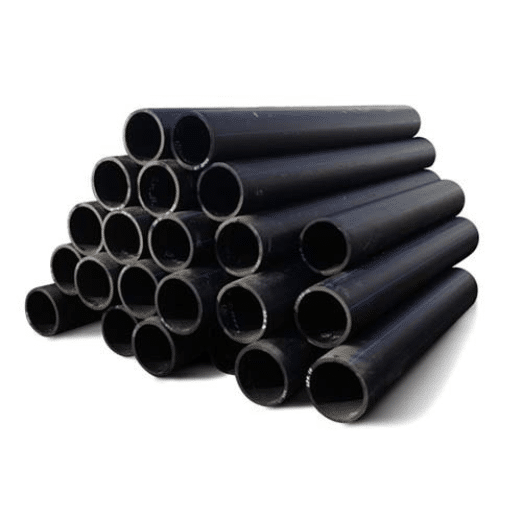
The Electric Resistance Welding (ERW) process is a contemporary technique that is extensively adopted in the production of tubes and pipes. It makes use of electrical current to heat and fuse the edges of the steel strips together with no welding filler material required.
Electric Resistance Welding Method
Electric Resistance Welding (ERW) is a process with a very high efficiency that spins out a pipe and tube made by melting the edges of the coil material with the heat from electrical resistance. By using this method, one does not have to buy additional welding materials, making the process not only cost-effective but also eco-friendly.
Modern ERW Advantages: The newly developed ERW manufacturing process along with the use of high frequencies and strict quality controls has rendered ERW pipes equally reliable for moderate pressure applications. This modernized process guarantees very few defects, constant wall thickness, and very strong bonding.
Steps Involved in the ERW Process
Step 1: Preparation of the Strip
The very first step of the procedure consists of steel strips or coils being unrolled and then leveled, which not only removes surface irregularities but also prepares the steel for further processing. The trimming of the strip’s edges follows, according to the required specifications, as the last stage in this process.
Step 2: Forming
The steel strip is gradually shaped into a tubular profile using forming rollers. The desired diameter and geometry of the pipe are secured with this step.
Step 3: Welding
The edges of the formed steel tube receive the application of high-frequency electric currents. The heat caused by the electric resistance melts the edges, which are then pressed together to form a weld. External filler material is not needed for this step at all.
Step 4: Heat Treatment
Post-weld heat treatment is done to relieve the residual stresses and to improve the pipe’s mechanical properties, thus assuring its strength and durability.
Step 5: Sizing and Shaping
The welded pipe goes through a series of sizing rollers to get the exact outer dimensions and the required roundness.
Step 6: Non-Destructive Testing (NDT)
Quality control is performed by non-destructive testing methods, like ultrasonic or eddy current testing, to find any internal or surface defects, which are all very sophisticated and reliable.
Step 7: Cutting and Finishing
The pipe is cut into predefined lengths, and depending on the end-use requirements, other finishing processes like beveling, threading, or coating may also be performed.
Common Applications for ERW Pipes
| Industry/Application | Primary Use | Key Advantages |
|---|---|---|
| Oil and Gas Industry | Transportation of oil, natural gas, and liquids | Efficient long-distance transport, reliable for refining operations |
| Water and Sewage | Water supply and sewage disposal systems | Corrosion immunity, high-pressure capacity |
| Structural/Construction | Building frameworks, scaffolding, structural applications | Strength, stability, cost-effectiveness |
| Automotive Industry | Chassis, frames, exhaust systems | High dimensional accuracy, consistency |
| Agriculture/Irrigation | Irrigation systems, water distribution | Dependable, economical solution |
Differences Between ERW and Seamless Steel Pipes
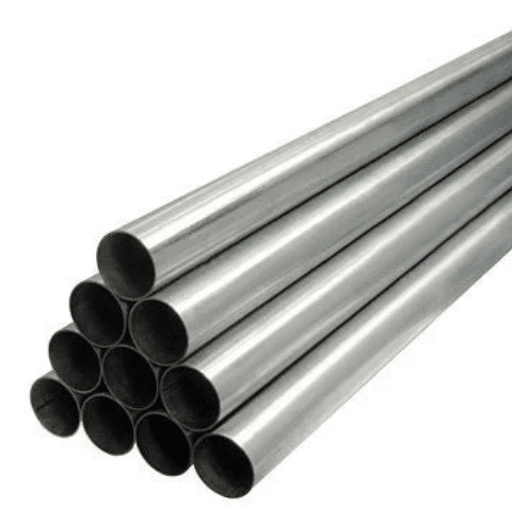
The most significant differences between ERW (Electric Resistance Welded) pipes and seamless steel pipes are in their production methods and areas of use.
| Feature | ERW Pipes | Seamless Pipes |
|---|---|---|
| Manufacturing Method | Welding steel plates/strips together | Extrusion from solid billet |
| Visible Seam | Yes – longitudinal weld line | No – uniform structure |
| Cost | More economical | Higher cost |
| Pressure Rating | Low to medium pressure | High pressure and temperature |
| Dimensional Accuracy | Excellent precision | Good uniformity |
| Best Applications | Water distribution, automotive, structural | Oil & gas, power generation, chemical processing |
| Strength | Reliable for moderate applications | Superior strength, no weak points |
Strength and Durability Comparisons
Recent revelations in the comparison between the strength and durability of ERW (Electric Resistance Welded) and seamless steel pipes have been that each type has certain advantages according to the application.
ERW Pipe Strength
Modern Advancements: Welding technology has greatly enhanced ERW pipe quality and reliability. Weld seams are now very strong and consistent.
Best For: Low to medium-pressure applications like water transportation or structural support in buildings.
Cost Efficiency: Recognized for performance where cost efficiency is essential without compromising safety.
Seamless Pipe Strength
No Weak Points: No welds or joints provide inherently high strength for high-pressure situations.
Best For: Drilling, oil & gas pipeline transfer, feedwater systems in power plants.
Critical Applications: Still the choice for high-stress conditions and critical safety requirements.
Corrosion Resistance in Different Pipe Types
Corrosion resistance is an absolutely necessary feature that must be taken into account when picking pipe types for industrial applications. The resistance of seamless and ERW pipes to corrosion depends on the materials from which they are made, and their intended use.
Corrosion Protection Strategies:
- Seamless Pipes: Often produced using high-strength alloys like stainless steel, providing superior corrosion resistance in high-pressure and extreme conditions
- ERW Pipes: May require protective coatings or treatments when uncoated to enhance rust and chemical damage resistance
- Galvanized ERW: Industries frequently choose galvanized ERW pipes to ensure longer wear in corrosive environments like water or chemical exposure
Cost Considerations for ERW and Seamless Pipes
Evaluating the cost implications of ERW (Electric Resistance Welded) and seamless pipes, several factors come into play. Recent market data indicates that ERW pipes usually are a more economical choice than seamless pipes.
| Cost Factor | ERW Pipes | Seamless Pipes |
|---|---|---|
| Manufacturing Process | Straightforward welding of metal strips | Complex extrusion and elongation |
| Initial Cost | Lower purchase price | Higher purchase price |
| Best Value For | Less stringent environments | High-pressure, high-temp, critical applications |
| Long-term Consideration | Cost-effective for moderate demands | Superior strength justifies premium cost |
In the end, not only the initial installation costs but also the operational life, project specifications, and environmental factors should determine the selection of the pipe type.
Applications of ERW and Seamless Steel Pipes
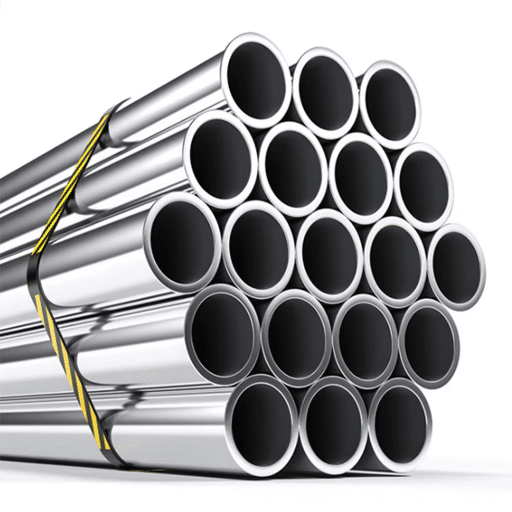
Oil and Gas Industry
SEAMLESS Most common choice for high-pressure and high-temperature applications, including drilling and the transportation of oil, gas, and other fluids.
ERW More suitable for low-pressure applications, such as the laying of pipelines that cross long distances to transport gas and water.
Construction and Infrastructure
ERW Most widely used in construction for scaffolding, fencing, and lightweight structures.
SEAMLESS Required for heavy construction projects where strength and durability are critical.
Automotive Industry
SEAMLESS Production of automotive components such as steering systems, suspension parts, and hydraulic cylinders where strength and precision are important.
ERW Found in simpler automotive applications like exhaust systems.
Thermal and Power Plants
SEAMLESS Significant presence in thermal and power plants due to characteristics that endure very high temperatures and pressures. Used in boilers, superheaters, heat exchangers.
ERW Sometimes employed in lower-pressure areas of power distribution systems.
Water Supply and Plumbing Systems
ERW Very economical choice for residential and commercial water transportation and plumbing systems. Smooth inner surface promotes effective fluid flow.
SEAMLESS Installed for plumbing in advanced industrial facilities where there are more stringent temperature and pressure demands.
High-Pressure Applications
Oil and Gas Transportation
Pipes made by ERW method are applied to carry crude oil and natural gas under high pressure along with maintaining their ability to endure extreme external and internal pressure which guarantees safe and effective resource delivery even over long distances.
Boiler and Steam Systems
These pipes find application in the manufacturing of boilers that require high-pressure steam systems. The seamless weld design of these pipes helps to maintain the integrity of the system under changing temperature and pressure conditions.
Hydraulic Systems
ERW pipes have been employed in hydraulic fluid transfer systems thereby offering a solid solution for coping with the high-pressure demands of industrial machinery and equipment.
Power Generation Plants
ERW pipes are utilized in high-pressure piping systems within power plants to circulate steam and feed water. Their high strength combined with resistance to corrosion makes them perfect for such applications.
Chemical and Petrochemical Industries
Steel ERW pipes play an important role in the chemical and petrochemical industries by handling the processing and transport of chemicals under high pressure. They not only guarantee the safe handling of dangerous materials but also enhance system security and operational efficiency.
Use in Construction and Infrastructure
Steel ERW pipes. The construction and infrastructure industries have a great dependency on their properties including longevity, affordability, and flexibility. They find use in structural applications such as building frameworks, bridges, and industrial sheds where strong structures are required to hold heavy weights.
Modern Construction Trends:
The latest Google search results indicate that there is a trend of increasing utilization of ERW steel pipes in contemporary green building designs. The reason behind using these pipes is their recyclability and, thus, lesser environmental impact compared to traditional materials. Their compatibility with novel engineering techniques guarantees that they would still be required as the world’s changing infrastructure would demand that both sustainable practices and rapid urban development not be hindered.
Furthermore, the interior of the pipes has a smooth surface that allows water and fluids to flow easily, making them perfect for plumbing and drainage systems.
Pipe Used in Oil and Gas Industries
In the oil and gas industries, pipes are a major concern since they are the main method to transport materials like crude oil, natural gas and also refined products from one place to another over a vast distance. ERW (Electric Resistance Welded) steel pipes are among all pipe types, which are considered the most durable, strong, and economical.
Why ERW Pipes Excel in Oil & Gas:
- High-pressure capacity – withstand extreme external and internal pressure
- Safe transportation – guarantee secure resource delivery over long distances
- Continuous welding – ensures quality uniformity
- Critical applications – suitable for offshore drilling and long-distance pipeline projects
- Enhanced efficiency – improving manufacturing techniques continue to boost performance
Recent studies and statistics have indicated that these pipes are gaining more popularity due to their capacity to withstand high pressures and extreme conditions that are often encountered in oil and gas operations. Now that the manufacturing techniques are improving, the ERW pipes are still there to enhance the efficiency, safety, and sustainability of the oil and gas industry while at the same time meeting the industry’s demand for a reliable infrastructure.
References
-
Arkansas Gas Pipeline Code – Cornell Law School
Discusses the use of low-frequency electric resistance welded (ERW) pipes in pipeline segments and their compliance with safety regulations.
Visit the site -
Pre-Insulated Piping Guidelines – University of Colorado Anschutz Medical Campus
Includes specifications for ERW carbon steel pipes used in pre-insulated piping systems, adhering to ASTM standards.
Visit the site
Frequently Asked Questions (FAQ)
What does erw stand for in the context of pipe manufacturing?
In the manufacturing of steel pipes, ERW, or Electric Resistance Welded, is the term mainly used. The whole process consists of rolling flat steel sheets to cylindrical shape and welding two edges together by the use of electric resistance. This results in a cross-section that is very strong and so can be used in many places.
What are the differences between erw steel and seamless pipe?
The main contrast that exists between ERW steel and seamless pipe is the way that each of them is made. While ERW pipes are produced by rolling of metal sheets and welding the edges, the seamless ones come from solid round steel bars which are drawn to cylindrical shapes with no joints, the pressure applications are affected by this accordingly, seamless pipes being able to withstand higher pressures than those of ERW types.
Can you explain the erw process for pipe manufacturing?
The ERW process consists of several stages: first, a flat steel sheet is shaped into a pipe. Next, the edges of the sheet are heated and fused together through electric resistance. This technique is economical and enables the production of pipes in any desired size or thickness, making it a common choice for suppliers of pipes.
What types of pressure applications are suitable for erw pipes?
Pipes made through Electric resistance welding are perfect for medium pressure applications. Their areas of application include structures and even transport of fluids and gases. Nonetheless, in critical situations such as high-pressure applications, seamless pipes are often relied on because of their superior strength and integrity.
How does the quality of erw steel compare to seamless pipe?
The manufacturing method and raw materials influence the quality of ERW steel. Seamless pipes generally have an au in quality when compared to seamless ones, as they are less prone to defects and stronger by not having welded joints than ERW pipes. However, ERW pipes can achieve certain standards and they are continuously used in different industries.
What are the common applications for welded and seamless steel pipes?
Welded pipes which include ERW are very popular in building, infrastructure, and different industrial applications. Transportation of oil and gas is one of the major uses of seamless pipes as they are the only ones to endure high-pressure applications, thanks to their strength and durability. However, both types of pipes are indispensable in their respective markets.
What types of raw materials are used in the manufacture of erw pipes?
Mostly flat steel sheets or coils are the materials from which ERW pipes are produced. The final shape of the pipe is obtained by rolling and welding these materials. The performance and longevity of the finished product are greatly affected by the quality and grade of the steel used.
What is the significance of pipe fittings in relation to erw pipes?
Fittings for pipes are very important components which join different parts of ERW pipes in a piping system. They provide ways for the pipe to turn, split, and reduce in diameter. The piping system’s integrity and efficiency are ensured through proper fittings, thus making them indispensable in ERW pipes applications.

